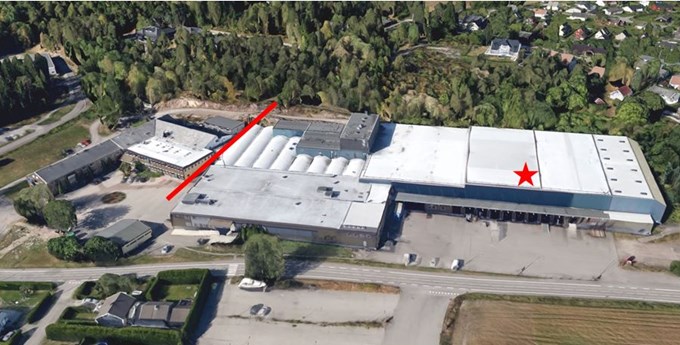The investigation has revealed several serious and reprehensible fire safety related practices in the building. It appears that a focus on fire preventive work has been absent, as demonstrated by several deviations from requirements in relevant laws and regulations. Some of these deviations have directly contributed to the consequences of the fire. A specific example is the inadequate maintenance of the sprinkler system, which was disconnected on the day of the fire without the implementation of sufficient compensatory measures. In addition, the resistance of several fire separating walls was compromised, which most probably led to a faster fire spread through the building than if the fire resistance of the walls had been intact. The investigation also showed that several organisational measures were missing and that the organisation also lacked a plan for the fire preventive work.

BASA-Huset in Tønsberg, Norway. The point of origin of the fire is indicated by the red star. The parts of the building on the right-hand side of the red line were destroyed. Figure: Google Earth.
It has also been found that the local fire service did not conduct any inspections in BASA-Huset after 2003. The activities and nature of the building before 2003 had caused it to be defined as a building to be placed under inspection from the fire service according to the fire regulations. However, it was never deregistered and should therefore have been inspected on a regular basis. If the inspections had been conducted according to the regulations, and the deviations had been registered and corrected, the fire would most likely never have developed with the size nor led to the consequences that occurred.
Based on the information found through our investigation we recommend focusing on the following factors:
- Fire services should assess and ensure the quality of their procedures to ensure that buildings where regulations or risk assessments require building inspection are included in their building inspection program.
- Fire services should establish good procedures for sharing information between the staff involved in fire preventive work and the staff involved in firefighting. This will, for example, help ensure that valuable observations from the fire brigade’s response to nuisance alarms can be used in fire preventive work.
- During building inspections, more focus should be on organisational fire preventive measures to ensure that the organisation has developed all required plans and that the plans are up to date. A check should be made that key personnel are suitably qualified and experienced to fulfil their roles. In this way they will be better equipped to make sound decisions related to the operation and maintenance of buildings.
- The need for fire partitions, fire doors and other fire preventive measures to be labelled should be evaluated. In this way the users of a building will easily understand the function of these fire safety systems and their modification and resulting impact on performance, without the responsible person(s) knowing the potential consequences, can be minimised.
- The Norwegian Directorate for Civil Protection should develop information material targeted at building owners. The information should include references to the laws and regulations the owners are obliged to follow regarding fire safety and fire preventive work.
The investigation, which was carried out for the Norwegian Directorate for Civil Protection and the Norwegian Building Authority, aimed to address why the fire grew as large as it did, and what could be learned from the incident. A special focus was paid to the condition of passive and active fire safety measures, organisational measures and the fire brigade’s extinguishing effort, and how these factors affected the outcome of the fire. The study was based on current regulations, police documents, building files and interviews.